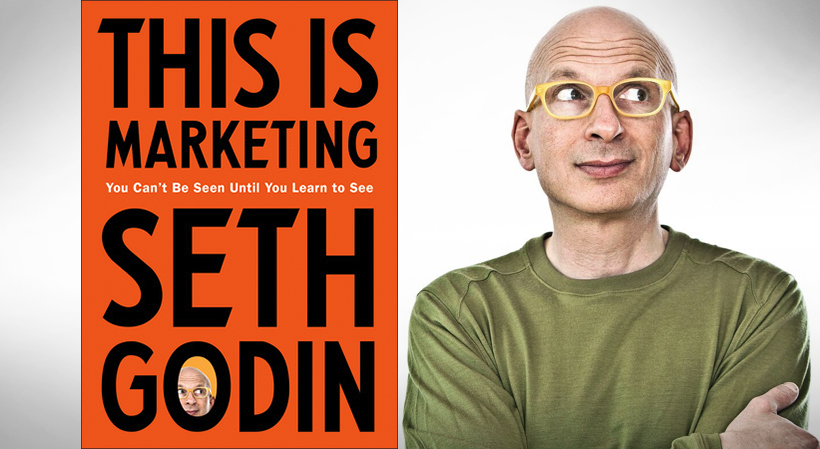

Este titlul ultimei cărți publicate de Seth Godin, iar subtitlul “You can’t be seen until you learn to see” sintetizează și la ce să ne așteptăm din acestă lectură.
Este o carte adresată marketerilor în general, dar în mod particular celor ce vor să-și asume rolul de agent de schimbare într-o organizație, indiferent de dimensiune.
Who’s it for? și What’s it for? sunt întrebările în jurul cărora gravitează ideile din această carte. Privite din această perspectivă, răspunsurile oferite de Seth Godin sunt:
Ideile lui Seth se derulează și se dezvoltă conform unui plan de marketing, așa cum învățăm la școală: de la cine suntem și ce vrem să schimbăm, până la cum și cu ce resurse.
Cartea este diponibilă pe Amazon. Mai jos câteva idei de păstrat:
Marketers make change happen: for the smallest viable market, and by delivering anticipated, personal, and relevant messages that people actually want to get.
Marketers don’t use consumers to solve their company’s problem; they use marketing to solve other people’s problems. They have the empathy to know that those they seek to serve don’t want what the marketer wants, don’t believe what they believe, and don’t care about what they care about.
The relentless pursuit of mass will make you boring, because mass means average, it requires you to offend no one and satisfy everyone. It will lead to compromises and generalisations. Begin instead with the smallest viable market. What’s the minimum number of people you would need to influence to make it worth the effort?… Choose the people you change, choose your future.
The goal of the smallest viable audience is to find people who will understand you and will fall in love where you hope to take them. Loving you is a way of expressing themselves. Becoming part of your movement is an expression of who they are.
That love leads to traction, to engagement, and to evangelism. That love becomes part of their identity, a chance to do something that feels right.
You can’t hope that everyone will feel this way, but you can do your work for the people who do.
***
Your job as a marketer is to find a spot on the map with edges that (some) people want to find. Not a selfish, unique selling proposition, done to maximise your market share, but a generous beacon, a signal flare sent up so that people who are looking for you can easily find you. We’re this, not that.
As marketers and agents of change, we almost always overrate our ability to make change happen. The reason is simple. Everyone always acts in accordance withe their internal narratives.
The real question, then, is where does the internal narrative come from, and how does it get changed? Or, more likely, how do we use the internal narrative to change the actions that people take?…
Changing our behaviour is driven by our desire to fit in (people like us do things like this) and our perception of our status (affiliation and dominance). Since both these forces often push us to stay as we are, it takes tension to change them.
Once you see these forces at work, you’ll be able to navigate the culture in a whole new way. It will be as if someone turned on the lights and gave you a map.
… The smallest viable market makes sense because it maximises your chances of changing a culture. The core of your market, enriched and connected by the change you seek to make, organically shares the word with the next layer of the market. And so on. This is people like us.
The most important lesson I can share about brand marketing is this: you definitely, certainly, and surely don’t have enough time and money to build a brand for everyone. You can’t. Don’t try.
Be specific. Be very specific.
And then, with this knowledge, overdo your brand marketing. Every slice of every interaction ought to reflect the whole. Every time we see any of you, we ought to be able to make a smart guess about all of you.
Marketers find themselves on one of three paths:
Ignored
Sneaking around
Trusted
…The third method – trust – is the only one that pays for the investment required. And it’s nice that it’s also the easiest to live with.
A trusted marketer earns enrollment. She can make a promise and keep it, earning more trust. She can tell a story, uninterrupted, because with the trust comes attention. That story earns more enrollment, which leads to more promises and then more trust. And, perhaps, if the story is well organized and resonates, this leads to word of mouth, to peer-to-peer conversations that are at the heart of our culture.
… The best marketers are farmers, not hunters. Plant, tend, plow, fertilise, weed, repeat. Let someone else race around after shiny objects.
Mai jos, o discuție recentă despre carte și la Creative Live.